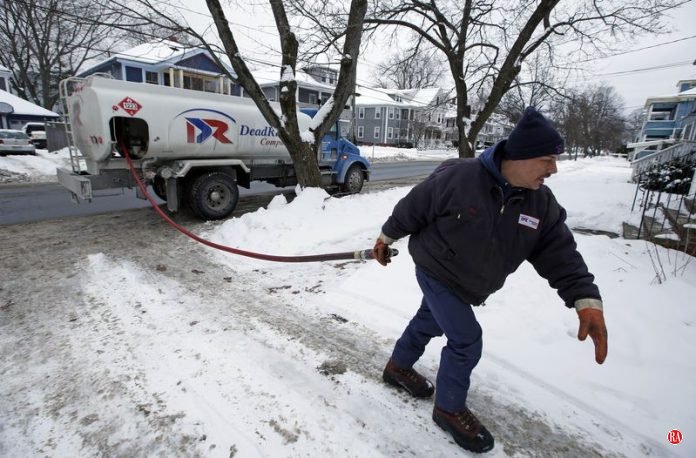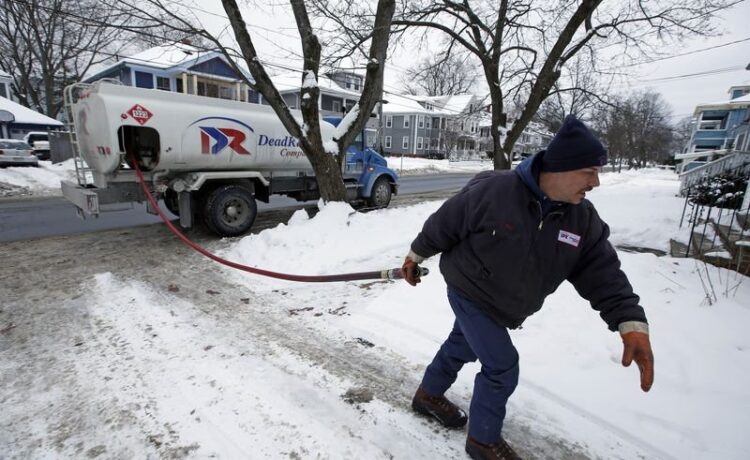
Connecticut’s relatively mild winter to date hasn’t prevented a huge surge in demand for heating assistance funds from poor households.
But despite that jump – as well as a huge cutback in federal Low Income Household Energy Assistance Program funding – it remains unclear whether the General Assembly will forfeit a fraction of this year’s state budget surplus to bolster the program.
House Speaker Matt Ritter, D-Hartford, and Senate President Pro Tem Martin M. Looney, D-New Haven, said last week that majority Democrats still are considering holding a special session later this month to tackle electric vehicle issues.
Whether that session is held – and whether it might be expanded to address winter heating assistance – likely won’t be resolved until House and Senate Democrats hold separate caucuses early this week, leaders said.
Meanwhile, the Department of Social Services recently reported that 56,721 applications for the Connecticut Energy Assistance Program had been approved through mid-December, up 18.6% from the 2022-23 heating season.
If demand continues at that pace until the program closes in the spring, approved applications could top 125,000.
State social services officials projected last August that eligible households this fall and winter would total roughly 116,300. Household income must be at or below 60% of the state median to qualify. For a family of four, that’s a cap of $79,910.
But also last August, social services officials also warned of a major funding challenge.
Despite the first word in its name, the Connecticut Energy Assistance Program relies almost exclusively on federal funding. The state Department of Social Services only administers the program, working in conjunction with regional, nonprofit community action agencies.
State officials noted in late summer that federal funding had been rolled back to pre-pandemic levels. The nearly $85 million Connecticut would have to distribute this year not only was well below the more than $110 million Washington made available last winter, it also was the lowest since the winter of 2018-19.
But demand now isn’t close to what it was before the coronavirus pandemic.
Initial projections for this winter were up 43% from five years ago. State officials estimated the maximum benefit available to poor households would be $1,350, down $970 from last heating season. And many other families would lose hundreds of dollars each.
And if the demand trend from the first few months of this heating season continues, it would surpass the pre-pandemic caseload by 54% – watering down resources further.
“LIHEAP gives Connecticut families and seniors critical assistance to keep their homes warm when temperatures drop, as we experienced this weekend,” said Claire Coleman, Connecticut’s consumer counsel and the chairwoman of the state’s Low Income Energy Advisory Board. “I remain concerned that vulnerable households will be receiving a basic benefit that’s even lower than pre-pandemic levels of assistance and will not be prepared to cover their heating costs.”
The energy advisory board asked the General Assembly and Gov. Ned Lamont before the fall to bolster the $85 million CEAP budget by at least 20%, or roughly $17 million – to mitigate the financial hit.
That ask represents 2.5% of the nearly $657 million surplus Lamont’s budget office estimates Connecticut will have when the fiscal year closes June 30.
The Lamont administration has offered two arguments against using state dollars on this program: The first is that LIHEAP is a federal responsibility; the second, that the program is only designed to help, not to cover the full winter heating needs of the poor.
There also are two other factors, besides the mild winter to date, that offsets demand for the Connecticut Energy Assistance Program.
A new electric rate discount program ordered by the General Assembly will help income-eligible Eversource and United Illuminating customers secure either a 10% or 50% discount. Eligibility for the 10% break is the same as that of CEAP: household income at or below 60% of the state median. The 50% discount is available for those making 160% of the Federal Poverty Level or less. For a family of four, that’s about $48,000.
The second mitigating factor involves the roughly one-third of CEAP grant recipients that use home heating oil. Retail prices for this fuel have dropped steadily since the fall, according to state Department of Energy and Environmental Protection records. The average retail price per gallon has slipped gradually from $4.38 in mid-September to $3.72 at the beginning of January.
But other members of the energy advisory board cautioned state officials about relying too heavily on mild weather or utility discounts to sufficiently ease burdens on families in need.
Chris Herb, president of the Connecticut Energy Marketers Association, noted that dropping prices trend could plateau or even continue – but there’s also one huge qualifier.
If any expansion of conflict between Israel and Hamas, or between Russia and Ukraine, interferes with supply levels, “the markets would absolutely go crazy,” and prices could rise sharply.
And Nora Duncan, advisory board member and state director of the AARP, said that while she’s excited about the new electric utility assistance program, it’s only in its first year of operation.
“We haven’t seen what the outcome of that is” yet, she said.
Duncan also reminded state officials that for elderly residents and children, inadequate home heating poses a serious health risk.
“It’s not just uncomfortable,” she said. “It’s not just ‘put on a sweatshirt.’”














